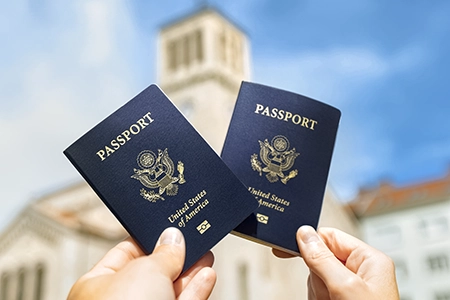Welcome to our comprehensive FAQ on website localisation, a vital process for businesses and organisations aiming to expand their reach to international audiences. In this digital age, having a website that resonates with a global audience is more crucial than ever. This FAQ delves into the intricacies of website localisation, exploring its importance, the challenges involved, and best practices for effective implementation. From understanding the differences between translation and localisation to mastering multilingual SEO, our guide is designed to provide valuable insights for anyone looking to make their website truly global. Whether you’re a business owner, marketer, or web developer, these questions and answers will equip you with the knowledge to navigate the world of website localisation successfully.
What is website localisation, and how does it differ from translation?
Website localisation involves adapting a website to suit a target audience’s cultural, linguistic, and regional specifics. It extends beyond mere translation, encompassing cultural nuances, local currency, date formats, and legal requirements to ensure the site resonates with its intended audience. In contrast, translation primarily focuses on converting text from one language to another. While translation is a crucial component of localisation, it is just one aspect of the broader process that considers a wide range of cultural, functional, and design elements to create a website that feels native to users from a specific region.

Are you looking to localise your website?
Look no more. With over 20 years of experience in Turkish-English and English-Turkish localisation of websites, we’re here to assist you. Regardless of programming language, whether ASP, C, or Phyton, and irrespective of the architecture, whether Linux or Windows-based, we are well equipped to solve all your localisation problems. Click “Get a Quote” to start your localisation journey with us.
Why is website localisation vital for reaching international audiences?
Website localisation is crucial for reaching international audiences because it ensures a website is culturally and contextually relevant to different user groups. Localisation creates a more engaging and intuitive user experience by adapting content, design, and functionality to meet local audiences’ specific needs and preferences. This tailored approach enhances user satisfaction and trust. It significantly increases the potential for higher engagement, conversion rates, and brand loyalty among diverse global markets.
How can website localisation improve user experience?
Website localisation can significantly improve user experience by presenting content in a way that feels familiar and relevant to the audience. It involves translating text and adjusting cultural references, design elements, and functional aspects like payment methods and customer support. This tailored approach makes the website more accessible and intuitive for users from different cultural backgrounds, enhancing their comfort and trust. As a result, users are more likely to engage with the website, navigate it easily, and have a positive overall experience, which is essential for building brand loyalty and customer satisfaction.

Make Your Website Accessible for Turkish Minorities.
There are over 500 thousand Turks and approximately 300 thousand Turkish Cypriots in the UK. Make your website more accessible to Turkish-speaking minorities. Click “Get a Localisation Quote” to start your hassle-free localisation journey with us.
What are the key elements of a successful website localisation strategy?
The key elements of a successful website localisation strategy include:
- Thorough cultural adaptation which involves not only translating the language but also adapting cultural references and idioms.
- Consideration of local SEO practices to ensure visibility in local search engines.
- Technical adaptation to account for local internet practices and legal requirements.
- A user-centric approach, focusing on the preferences and behaviours of the local audience.
This comprehensive strategy ensures the website communicates effectively in a new language and resonates culturally and functionally with its intended audience.
What are the common challenges in website localisation?
Common challenges in website localisation include handling cultural nuances and local sensitivities, ensuring accurate and context-appropriate translation, addressing technical and formatting issues such as right-to-left languages or character encoding, adapting content to local SEO requirements, and staying updated with local regulations and legal standards. Additionally, maintaining brand consistency while adapting to local markets and managing the complexity of localising for multiple regions simultaneously can be significant hurdles. These challenges necessitate a nuanced approach, combining linguistic expertise with a deep understanding of the target culture and technical considerations.
How does website localisation impact SEO and online visibility?
Website localisation significantly impacts SEO and online visibility by tailoring content to local languages and search habits, thus enhancing a website’s relevance and ranking in local search engine results. By using locally relevant keywords and phrases, adapting meta tags, and considering regional search engine algorithms, localisation makes a website more discoverable to the target audience. This approach increases organic traffic from the region. It improves user engagement, as localised content is more likely to meet the specific needs and interests of the local audience, leading to longer visit durations and lower bounce rates.
What steps are involved in localising a website effectively?
Effective website localisation involves several key steps: Firstly, defining the target audience and understanding their cultural and linguistic nuances. Secondly, translating and culturally adapting the website content, including text, images, and multimedia; thirdly, customising the site’s design and layout to align with local preferences and standards. Fourthly, ensuring technical adaptations like currency, date formats, and payment options are in place, and fifthly, optimising for local SEO, using region-specific keywords and meta tags. Finally, conducting thorough testing with local users to identify and rectify usability issues, ensuring the localised site resonates well with the target audience.

Make Your English Website Read and Feel Like Turkish.
With over 20 years of experience in website localisation, we guarantee to deliver a naturally-reading website specifically tailored for Turkish-speaking audiences. Take the first step towards localisation by clicking “Request a Localisation Quote” now.
Can website localisation lead to increased sales and conversions?
Yes, website localisation can lead to increased sales and conversions. By adapting a website to align with a target audience‘s cultural, linguistic, and functional preferences, localisation makes the website more appealing and user-friendly. This relevance enhances the user experience, builds trust, and effectively communicates the brand’s message, which can significantly increase the likelihood of engaging users and converting visits into sales. Localised websites can better address different markets’ specific needs and expectations, thus boosting global reach and commercial success.
How do you choose the right language and cultural nuances for website localisation?
Choosing the right language and cultural nuances for website localisation involves understanding the target audience’s preferences and cultural context. Research the primary language and dialects spoken in the target region and consider local idioms, slang, and cultural references. It’s also crucial to be aware of cultural sensitivities and taboos to avoid misunderstandings or offence. Employing native speakers or cultural consultants can provide invaluable insights into local customs and communication styles, ensuring the localisation resonates authentically with the audience. This careful, informed approach helps create a website that speaks the language of its users and reflects their cultural identity and values.
What tools and technologies are available for website localisation?
Various tools and technologies are available for website localisation, including translation management systems (TMS) that streamline the translation process, content management systems (CMS) with multilingual support, machine translation tools for initial drafts, and localisation software that handles text and multimedia content adaptation. SEO tools for local keyword research and analysis and quality assurance tools for testing and validating localised content are also essential. These technologies facilitate efficient translation, cultural adaptation, and technical compliance, ensuring a cohesive and user-friendly experience for the localised website.
How do I measure the success of my website localisation efforts?
The success of website localisation efforts can be measured through various metrics, such as increased traffic from the target region, higher engagement rates (like longer session durations and lower bounce rates), improved conversion rates, and enhanced customer feedback or satisfaction scores. Monitoring SEO performance, such as keyword rankings in the local language, and analysing social media engagement in the region are also effective methods. Additionally, tracking the performance of localised marketing campaigns and monitoring sales or sign-up rates from the localised audience provide direct indicators of the localisation’s impact on business goals.
What is the role of multilingual SEO in website localisation?
The role of multilingual SEO in website localisation is pivotal, as it optimises the site for search engines in different languages and regions. It involves using region-specific keywords, adapting meta tags and descriptions, and ensuring content relevance to the local audience’s search habits. This SEO strategy increases the website’s visibility in local search engine results, driving more organic traffic from the targeted region. It also enhances user experience by providing content that resonates culturally and linguistically, leading to better engagement and conversion rates. Multilingual SEO is a crucial element in making a localised website successful in reaching and engaging its intended audience.
How does website localisation cater to local regulations and compliance?
Website localisation caters to local regulations and compliance by adapting content and practices to meet the legal and cultural standards of the target region. This includes ensuring data protection and privacy per local laws, adhering to consumer rights and e-commerce regulations, and respecting cultural norms and sensitivities. Localisation also involves adjusting terms and conditions, privacy policies, and other legal documents to comply with regional legislation. By addressing these regulatory aspects, localisation enhances user trust and credibility, safeguards the business against legal risks, and ensures smooth operation within the local market.
What are the costs involved in website localisation?
Website localisation costs vary based on website complexity, target languages and markets, and cultural adaptation needs. Key expenses include professional translation services, design and multimedia content localisation, technical SEO and compliance adaptations, and quality assurance testing. Additional costs may arise from hiring local consultants or experts, ongoing maintenance and updates for localised content, and potential investments in localisation tools and technologies. The overall expense is influenced by the need for accuracy, cultural sensitivity, and technical precision in adapting the website for different regional audiences.
How long does the website localisation process typically take?
The duration of website localisation varies based on project scope and complexity. A single language and a moderately sized website can take several weeks to a few months. This timeline includes translating and adapting content, modifying design elements, conducting technical SEO adjustments, and thorough testing. Larger projects involving multiple languages or extensive cultural adaptations can take longer. The time frame is also influenced by factors like the availability of resources, the efficiency of the localisation tools used, and the need for extensive quality assurance to ensure accuracy and cultural appropriateness.
What is the importance of localising multimedia content on websites?
Localising multimedia content on websites is important because it enhances the overall user experience for the target audience. Multimedia elements like images, videos, and infographics often carry cultural contexts, and adapting them ensures relevance and relatability. Localised multimedia can convey messages more effectively, resonate with local customs and values, and prevent misunderstandings arising from culturally inappropriate content. This holistic approach to localisation strengthens the website’s appeal, making it more engaging and accessible to the audience, reinforcing the brand’s connection with its users in different regions.



